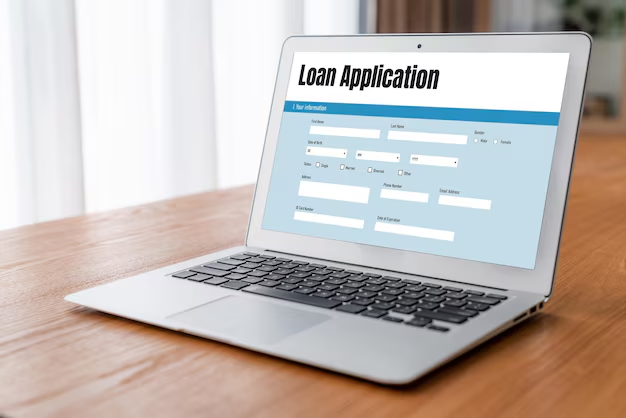**This article was generated with the assistance of AI. While efforts are made to provide accurate and helpful information, occasional errors or omissions may occur.
Simplifying the Process of Closing a Bank Account: A Comprehensive Guide
In the digital age, our financial habits are evolving, prompting many of us to reconsider our banking options. Perhaps your bank is charging too many fees, has poor customer service, or offers scant rewards. Whatever your reason, deciding to close a bank account is an important step in managing your personal finance. However, without proper guidance, it can be cumbersome and time-consuming. Let’s walk through the detailed process and explore everything you need to know about successfully closing a bank account.
Understanding the Reasons to Close a Bank Account
Before you dive into the how-to, it's crucial to understand why you might want to close your bank account. This can help refine your personal finance strategy and guide you toward choosing a better banking option.
Common Motivations for Closing
High Fees and Charges: Some banks impose high-maintenance fees that can eat into your savings, making it unsuitable for budget-conscious individuals.
Poor Customer Service: Long wait times, unhelpful support, or unresolved issues can make banking a frustrating experience.
Better Alternatives: With countless banks, credit unions, and online options, you might find a bank offering better interest rates, rewards, or features that align with your needs.
Life Changes: Moving to a different location, changing employment, or family circumstances might necessitate a closer bank account tied to a specific area.
The Step-by-Step Guide to Closing Your Bank Account
1. Open a New Account
Start Fresh: Establish a new bank account before closing your current one. This ensures you have a place to transfer funds, pay bills, and manage financial activities without interruption.
- Shop Around: Compare features such as interest rates, fees, rewards, and service quality.
- Transition Services: Look for banks offering switch kits to simplify moving your financial activities.
Tip: Schedule time to adjust any automated activities, like direct deposit or bill payments, linked to your new account.
2. Transfer Funds and Finalize Transactions
Check Your Balance: Ensure all your transactions have cleared. This includes deposits, withdrawals, and any scheduled payments.
Transfer Remaining Balance: Move your money to the new account while keeping enough for any pending fees with your current bank.
Update Automatic Payments: Switch recurring payments and deposits to the new account to prevent missed payments and overdrafts.
3. Request Account Closure
After securing your funds, you're now ready to formally close your account with the bank:
Contact Your Bank
In-Person or Online?: Choose a method convenient for you. Some banks require you to close the account in person.
Formal Request: Write a formal request if needed, outlining your intention to close the account. Sometimes, banks provide forms specifically for this purpose.
Identification Ready: Have your ID and any account-related information handy to verify your identity.
Settle Outstanding Balances
Paid in Full: Ensure any account-linked credit products, like overdrafts or credit cards, are paid off.
Check on Fees: Some accounts incur closing fees. Verify and clear these before shutting down the account.
4. Confirm Closure and Retain Documentation
Closure Confirmation: Request written confirmation from the bank that your account has been closed to ensure no further fees are charged.
Final Statement: Obtain a final statement reflecting a zero balance or the account closure.
Document Safekeeping: Keep closure confirmations and final statements in a secure location for future reference.
Navigating Account Closure Challenges
Potential Challenges and Solutions
Pending Transactions: Ensure all pending transactions are settled to prevent issues during closure.
Fees and Refunds: Clarify any potential fees, and inquire about refunds for services paid in advance.
Linked Accounts: Disconnect any financial institutions or services linked to your account, such as investment services or mobile payment platforms.
Avoid Common Pitfalls
Account Dormancy: Avoid leaving the account inactive; it might incur fees until officially closed.
Communication: Unsubscribe from bank communications post-closure to prevent confusion or accidental harassment.
Alternatives to Closing: Is It Right for You?
Before closing, consider alternatives that might better suit your needs without the rigorous process:
Downgrading or Switching Accounts
Change Account Type: Banks often provide multiple account types. Switching to a low-fee or no-fee account might solve your immediate concerns.
Negotiate With Your Bank: If you’ve been a loyal customer, appeal for better terms or reduced fees before resorting to closure.
Consolidating Accounts
Having multiple accounts at the same bank? Consider consolidating to simplify your financial management and reduce fees.
Key Takeaways: Closing Your Bank Account with Confidence
Closing a bank account involves strategic planning and execution. Here’s a quick bullet-point summary to streamline your steps:
- 📋 Prepare: Open a new account and transfer your financial activities
- 📲 Monitor: Ensure all transactions and payments are settled
- 📞 Contact: Reach out to your bank, establish your intent, and verify identity
- ✅ Confirm: Obtain closure written confirmation and secure final statements
- 🔄 Consider: Assess if alternative adjustments might better suit your needs
Taking these thoughtful steps will not only save you money and time but will also enable a seamless transition toward better financial health. By proactively managing your accounts and exploring various banking options, you can tailor your personal finance to best meet your lifestyle and financial goals.
Navigating the banking landscape with confidence begins with understanding how to manage, evaluate, and, when necessary, close bank accounts. Follow these guidelines to ensure your financial dealings are as seamless and stress-free as possible, allowing you to focus on broader financial prosperity.

Related Topics
- 50/30/20 Budget Rule
- Bank Account Switching Bonuses
- Beginner Personal Finance Guide
- Best Budgeting Apps
- Best Cash-back Websites
- Best Cashback Credit Cards For Groceries
- Best Checking Accounts
- Best Expense Tracker Apps
- Best High-yield Savings Accounts
- Best Money Management Tools
- Best Money-saving Tips
- Best Personal Finance Books
- Best Prepaid Debit Cards
- Best Savings Accounts
- Best Savings Apps